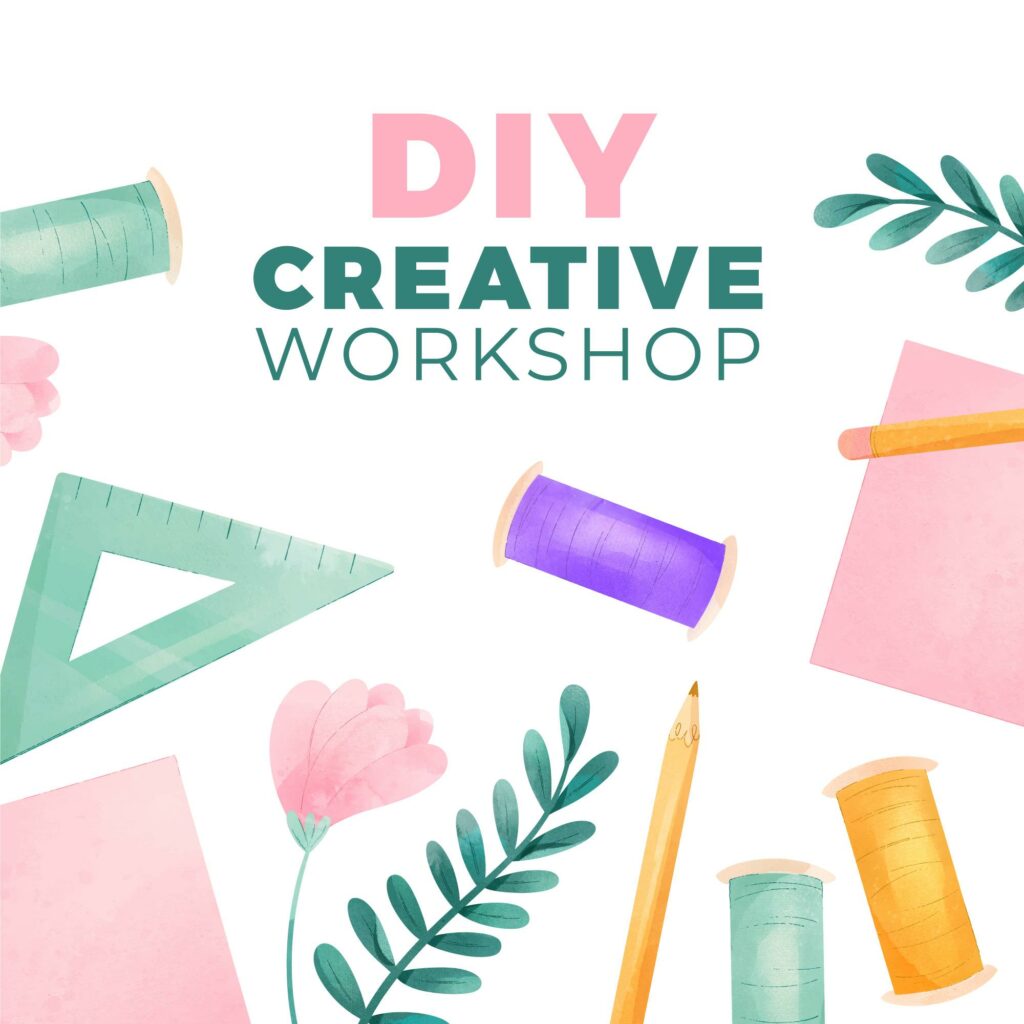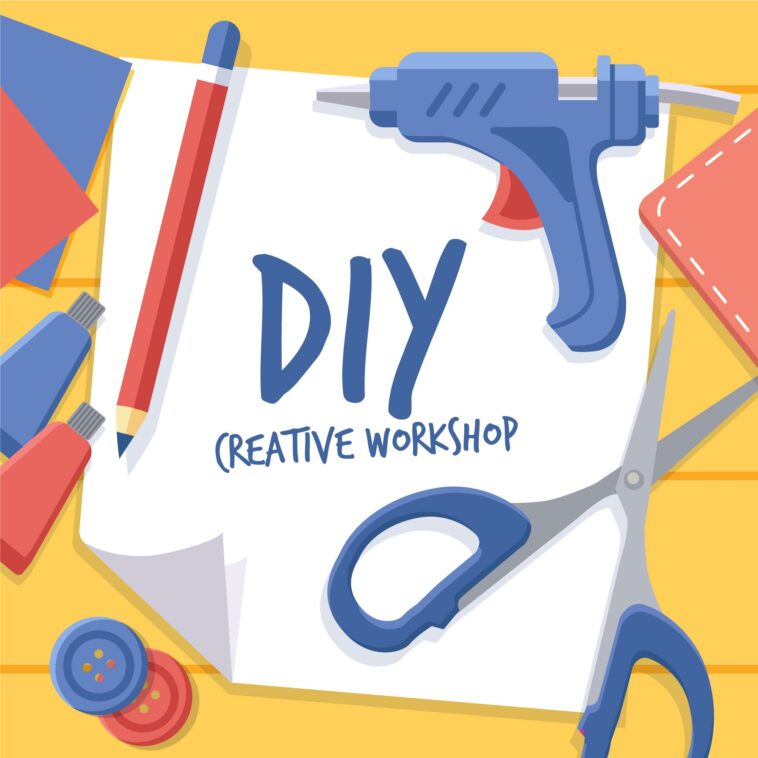DIY Benefits: Why the Do-It-Yourself Approach is Worthwhile
I've always been drawn to the the benefits of DIY projects movement, which encourages people like me to roll up their sleeves and tackle tasks, projects, and challenges on their own, rather than immediately turning to professionals or pre-made solutions.
Initially, it might seem intimidating, but I've come to realize that the advantages of embracing a DIY approach can truly transform different aspects of my life. So, let's dive into one of the most significant perks that I've experienced firsthand:
Saving Money
When we talk about the benefits of the DIY approach, one of the most compelling aspects is the potential for substantial cost savings. Whether it's home improvement, crafting, or even cooking, doing it yourself often means eliminating labor costs and markups associated with hiring professionals or purchasing pre-made products. This financial freedom can lead to significant improvements in your life, such as reduced debt, increased savings, and more disposable income for other pursuits.
To put it in perspective, let's consider home improvement projects. When you hire a professional contractor, you not only pay for their expertise but also cover the costs of labor and materials at retail prices. In contrast, taking the DIY route allows you to purchase materials at wholesale prices and invest your own time and effort instead of paying for labor. As a result, you can save a substantial amount of money, which can be redirected towards other important areas of your life, such as education, travel, or investments.
But the cost savings extend beyond home improvement. Imagine crafting your own furniture, sewing your own clothes, or even growing your own vegetables. Each of these DIY endeavors contributes to your financial well-being by reducing your reliance on commercial products and services. Moreover, as you gain experience in various DIY areas, your ability to save money continues to grow.
Check out our post on DIY Tools
Personal Satisfaction
Beyond the financial advantages, engaging in DIY projects can provide a deep sense of personal satisfaction and accomplishment. Completing a project from start to finish gives you a tangible result that you can take pride in. This satisfaction not only boosts self-esteem but also encourages you to take on more challenges and set higher goals, both in your DIY endeavors and in life in general.
Think about the last time you successfully tackled a DIY project, whether it was fixing a leaky faucet, painting a room, or building a piece of furniture. The sense of achievement you experienced is a testament to the power of the DIY mentality. You not only solved a problem but also gained a newfound sense of self-confidence and competence. This positive reinforcement can have a profound impact on your overall well-being and motivation.
Skill Development
Embracing a DIY approach allows you to acquire new skills and knowledge continuously. Whether you're learning to repair your car, knit a scarf, or build a bookshelf, each project provides an opportunity for growth. Over time, you'll become more proficient and confident in your abilities. These newfound skills can be applied to various aspects of your life, making you more self-reliant and resourceful.
Let's take the example of learning to repair your car. While it might initially seem intimidating, especially if you're not mechanically inclined, the process of diagnosing and fixing automotive issues can be immensely rewarding. As you delve into DIY car maintenance and repairs, you'll gradually build a foundation of knowledge that allows you to handle a wide range of issues, from changing the oil to replacing brake pads or even troubleshooting more complex engine problems.
The benefits of skill development extend beyond just fixing things. For instance, if you're interested in cooking, experimenting with DIY recipes and techniques can transform you from a novice cook into a culinary enthusiast. Your growing repertoire of cooking skills will not only save you money by reducing dining out expenses but also enable you to prepare healthier and more delicious meals for yourself and your loved ones.
In essence, the DIY approach becomes a continuous journey of self-improvement, where you're constantly expanding your skill set and acquiring new knowledge. This process of growth and learning not only enhances your practical abilities but also contributes to your personal and intellectual development.

Customization and Creativity
DIY projects offer the freedom to tailor products to your specific preferences. You're not limited to what's available in stores or what professionals provide. Whether you're designing your own clothing, creating unique home decor, or experimenting with personalized recipes, the possibilities for customization and creativity are endless. This allows you to express your individuality and create items that reflect your personality and style.
Consider the realm of home decor as an example. When you choose to decorate your home using DIY techniques, you're not restricted to the mass-produced options available in retail stores. Instead, you can create custom pieces that perfectly match your vision and aesthetic. Whether it's hand-painted artwork, handcrafted furniture, or unique lighting fixtures, your home becomes a reflection of your creativity and personality.
Moreover, DIY projects encourage you to think outside the box and find innovative solutions to problems. When you're not constrained by conventional methods or commercial products, you're free to experiment and invent new approaches. This process of exploration and discovery not only fuels your creativity but also enhances your problem-solving abilities.
Check out our post on What Does DIY Mean
Environmental Impact
Taking the DIY route can also have a positive impact on the environment. By making your own products, you can often choose sustainable materials and reduce waste. Repurposing or upcycling old items into something new can help minimize the carbon footprint associated with manufacturing and disposal. Additionally, DIY projects often involve using fewer resources and generating less packaging waste compared to mass-produced goods.
Let's consider the environmental benefits of DIY gardening. When you cultivate your own garden, you have control over the types of plants you grow and the methods you use. This means you can opt for organic practices, minimize the use of chemical pesticides and fertilizers, and reduce water consumption through efficient irrigation techniques. Furthermore, growing your own produce reduces the need for transporting goods over long distances, which can significantly cut down on greenhouse gas emissions associated with food distribution.
Another aspect of DIY with environmental benefits is upcycling. When you repurpose or upcycle old items into something new and useful, you divert waste from landfills and reduce the demand for new resources. This sustainable approach not only helps preserve the environment but also fosters a sense of responsibility and stewardship.
By embracing DIY projects with an eco-conscious mindset, you contribute to a greener and more sustainable future. Each sustainable choice you make, from using eco-friendly materials to reducing waste, has a positive ripple effect on the environment and the broader community.

Community Building
The DIY community is a vibrant and supportive one. Engaging in DIY projects can lead to connections with like-minded individuals who share your interests. Whether you join local clubs, participate in online forums, or attend workshops, you'll find a network of people willing to share knowledge, tips, and inspiration. Building relationships within the DIY community can lead to lasting friendships and opportunities for collaboration.
Think about the camaraderie and sense of belonging that arise from being part of a community of DIY enthusiasts. When you attend a woodworking class or join a gardening club, you connect with people who share your passion for creating and building. These shared interests foster a sense of community and provide opportunities to learn from others' experiences.
Moreover, the DIY community often places a strong emphasis on collaboration and mutual support. If you encounter challenges or need advice on a project, you can turn to your fellow DIY enthusiasts for guidance and assistance. This collaborative spirit not only enhances your skills but also deepens your sense of belonging to a supportive and encouraging community.
Check out our post on DIY Repair Parts
Health and Wellbeing
Engaging in DIY activities can have a positive impact on your physical and mental health. Physical DIY tasks, such as gardening or woodworking, provide exercise and fresh air, contributing to your overall well-being. Additionally, the sense of accomplishment from completing DIY projects can reduce stress and improve your mental health. It can serve as a productive and fulfilling outlet for creativity and problem-solving.
Let's delve into the health benefits of DIY gardening. Spending time outdoors in your garden not only allows you to connect with nature but also provides an opportunity for physical activity. Tasks like digging, planting, and weeding engage various muscle groups, promote flexibility, and improve cardiovascular health. Gardening can be a therapeutic and meditative experience that helps reduce stress, anxiety, and symptoms of depression.
Furthermore, the satisfaction of nurturing plants and watching them grow can boost your mood and self-esteem. The act of creating and maintaining a garden fosters a sense of purpose and connection to the natural world. This can be especially beneficial for individuals living in urban environments, as it offers a respite from the hustle and bustle of city life.
DIY activities that require problem-solving, such as assembling furniture or tackling home repairs, also have mental health benefits. These tasks stimulate cognitive functions, enhance concentration, and provide a sense of accomplishment when completed successfully. Engaging in hands-on projects can serve as a form of mindfulness, allowing you to be fully present in the moment and temporarily set aside worries and stressors.

Financial Independence and Long-Term Savings
Beyond immediate cost savings, DIY fosters financial independence and long-term financial stability. When you have the skills to handle essential tasks and repairs, you reduce your reliance on external services and professionals. This self-reliance translates into fewer unexpected expenses and greater control over your finances.
For instance, knowing how to perform basic car maintenance like changing oil or replacing air filters can prevent costly breakdowns and extend the lifespan of your vehicle. Similarly, having the ability to maintain your home's plumbing, electrical systems, and appliances can save you from costly emergency repairs. These skills not only protect your wallet but also provide peace of mind.
Over time, the cumulative effect of DIY practices can lead to substantial long-term savings. You'll find yourself spending less on maintenance and repairs, redirecting those funds towards investments or experiences that enhance your overall quality of life.
Empowerment Through Problem-Solving
DIY projects are opportunities to tackle real-world problems and find solutions independently. When faced with a challenge, whether it's fixing a leaky faucet or building a piece of furniture, you embark on a problem-solving journey. This empowerment through problem-solving extends beyond the specific task at hand and permeates other aspects of your life.
DIY encourages a proactive mindset where you approach obstacles as opportunities for growth rather than as insurmountable barriers. This mindset shift can have a profound impact on your ability to navigate life's challenges effectively. You become more resilient, adaptable, and confident in your problem-solving abilities, which can lead to success in various personal and professional endeavors.
Heritage and Tradition Preservation
Many DIY skills and practices have been passed down through generations, preserving heritage and tradition. Whether it's learning to bake a family recipe, crafting handmade gifts, or woodworking using techniques handed down by ancestors, DIY allows you to connect with your cultural and familial roots.
By embracing and continuing these traditions, you contribute to the preservation of cultural heritage. Moreover, sharing these skills with younger generations ensures that valuable knowledge and traditions are passed on, enriching the cultural tapestry for years to come.

Frequently Asked Questions (FAQs)
Q1: Is DIY suitable for everyone, or do you need special skills to get started?
A1: DIY is accessible to people of all skill levels. While some projects may require more expertise than others, there are countless beginner-friendly DIY projects available. Start with simple tasks and gradually work your way up as you gain confidence and skills. There are plenty of online resources, tutorials, and communities to support your DIY journey.
Q2: Can DIY save me money in the long run?
A2: Yes, DIY can lead to significant cost savings. By eliminating labor costs and markups associated with hiring professionals or purchasing pre-made products, you can save money on various projects. The more you embrace the DIY mentality, the more you can reduce your reliance on expensive services and products, ultimately saving you money over time.
Q3: What if I make mistakes while doing DIY projects?
A3: Making mistakes is a natural part of the learning process in DIY. In fact, it's through mistakes that you often learn the most. Don't be discouraged by errors; instead, view them as opportunities to improve and refine your skills. With persistence and practice, you'll become more adept at avoiding mistakes, and when they do occur, you'll be better equipped to address them.
Q4: How can I find inspiration for DIY projects?
A4: Inspiration for DIY projects can come from various sources. Explore online platforms like Pinterest, YouTube, and DIY blogs for project ideas and tutorials. Attend local DIY workshops or join clubs related to your interests. Additionally, you can draw inspiration from everyday life, your hobbies, and the desire to solve problems or create something unique.
Q5: What if I don't have much time to dedicate to DIY projects?
A5: DIY projects can be as short or as long as you want them to be. Many DIY tasks can be completed in a matter of hours or even minutes. If time is limited, consider starting with smaller projects that align with your schedule. Over time, you can work on larger endeavors as you become more comfortable with DIY techniques.
Q6: Are there any specific safety precautions I should take when doing DIY projects?
A6: Safety is paramount in DIY. Depending on the nature of your project, you may need safety equipment such as gloves, goggles, or masks. Always read and follow safety instructions provided with tools and materials. If you're unsure about safety measures, seek advice from experienced DIYers or professionals.
Q7: Is DIY only about home improvement projects?
A7: DIY encompasses a wide range of activities beyond home improvement. While home improvement is a popular category, DIY can also include crafting, woodworking, cooking, gardening, electronics, sewing, and much more. DIY is a versatile approach that can be applied to various aspects of life.
Q8: Can DIY have a positive impact on the environment?
A8: Yes, DIY can have a positive environmental impact. When you choose sustainable materials, reduce waste, and repurpose items through DIY projects, you contribute to environmental conservation. Additionally, DIY often involves using fewer resources and generating less packaging waste compared to mass-produced goods.
Q9: How can I connect with the DIY community and learn from others?
A9: Joining the DIY community is easy. You can find local clubs, workshops, and classes related to your interests. Online platforms such as DIY forums, social media groups, and video-sharing websites are excellent places to connect with fellow DIY enthusiasts. Engaging with the DIY community allows you to share knowledge, seek advice, and gain inspiration from others.
Q10: Can DIY activities improve mental health and well-being?
A10: Engaging in DIY activities can have a positive impact on mental health. The sense of accomplishment from completing DIY projects can reduce stress and improve mood. Additionally, DIY provides opportunities for creative expression, problem-solving, and mindfulness, all of which contribute to improved mental well-being.
Conclusion
Embracing the DIY approach has been a life-changing journey for me. It's not just about saving money or completing projects; it's about discovering my own capabilities, nurturing my creativity, and becoming more environmentally conscious. From the financial freedom that DIY offers to the deep sense of personal satisfaction and accomplishment, each aspect of this journey has left an indelible mark on my life.
Through DIY, I've not only saved money but also gained a newfound confidence in my abilities. I've developed practical skills, customized my surroundings to reflect my personality, and found a supportive community that shares my passion. This DIY mindset has not only improved my life; it's become an integral part of who I am, enriching my overall well-being, and reminding me that with determination and creativity, there are endless possibilities for personal growth and positive impact.
Sources
https://www.friendshipstatebank.com/pros-and-cons-of-do-it-yourself-projects
https://www.abc.net.au/everyday/the-many-benefits-of-diy-projects/12332162




